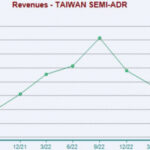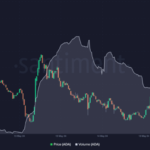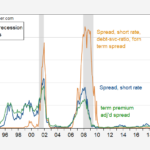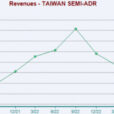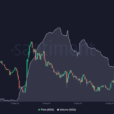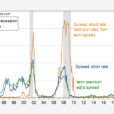
The Federal Reserve maintained its current stance on interest rates, opting not to implement a cut despite ongoing struggles with inflation. Since a hike in July 2023, the U.S. central bank has kept its benchmark short-term borrowing rate at a range of 5.25% to 5.50%. This marks the highest level in over two decades. This decision reflects the Fed’s continuous battle to bring inflation down to its 2% target. This goal remains elusive, as the committee cited a “lack of further progress” in its latest statement. Fed Slows Bond Roll-off to $25B, Eases Tightening PolicyIn a move that signals a subtle shift in monetary policy, the Federal Open Market Committee voted to slow down the pace of reducing its bond holdings on the central bank’s substantial balance sheet. This adjustment could be seen as a slight loosening in the Fed’s policy approach, particularly in light of the rigorous quantitative tightening that has been in effect. Previously, starting in June 2022, the Fed’s program allowed up to $95 billion monthly in proceeds from maturing Treasurys and mortgage-backed securities to expire. Now, under the new plan, the monthly cap on Treasurys will be reduced to $25 billion from $60 billion. Consequently, this scales back the annual reduction in holdings to $300 billion from $720 billion.Market Reaction and Forward OutlookThe Federal Reserve’s steadfast approach and the strategic dial-back in bond roll-off have had mixed implications. Chair Jerome Powell underscored the uncertain path ahead, stressing that “inflation is still too high” and that “further progress in bringing it down is not assured.” Yet, Powell also hinted that a rate hike was “unlikely” in the near future, a remark that buoyed investor sentiment significantly. Following these comments, the Dow Jones Industrial Average saw an uptick, rising by as much as 500 points.The U.S. economy is currently performing better and displaying stronger employment figures than many economists had anticipated. The unemployment rate has consistently stayed below 4% for over two years. This marks the longest period of such low unemployment since the 1960s. The economic growth was modest at a 1.6% annual rate in the first quarter of the year. However, consumer spending has increased significantly. This indicates that the economy is likely to continue expanding.Moreover, Powell’s ongoing adjustments and cautious optimism reflect the Fed’s delicate balancing act. They are striving to curb inflation while sustaining economic growth. With economic growth described as moving at “a solid pace” and employment figures remaining strong, the Fed’s policies will continue to evolve. They will respond to shifting economic indicators. Consequently, investors and economists alike will be watching closely. They understand that each Fed meeting could bring new shifts in policy as the situation demands. This “meeting by meeting” approach underscores the Fed’s commitment to navigating through these unpredictable economic waters with careful consideration and timely adjustments.More By This Author:China’s April Economic Slowdown: PMI Drops to 50.4Yen’s Dramatic Rally: Surges From 160.245 To 154.40 USDEthereum Climbs To $3,300, Hinting At Volatile Market Shifts



